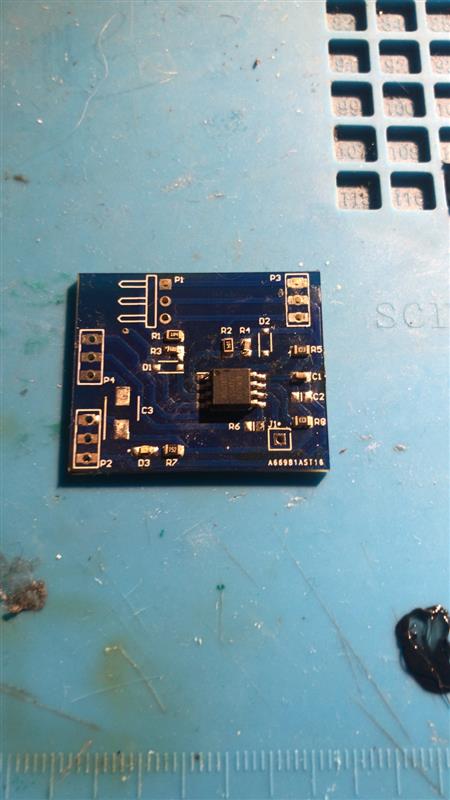-
- PCB TYPE
- PRINTED CIRCUIT BOARD PROTOTYPE ALUMINUM PRINTED CIRCUIT BOARD R&F PCB FPC HIGH FREQUENCY PCB HIGH-TG PCB HEAVY COPPER PCB HDI PCB PCB FOR LIGHTING METAL CORE PCB
time:May 20. 2021, 11:40:52 Views:118
1-Wrong landing method
All PCB design software tools include libraries of commonly used electronic components. These libraries include schematic symbols and PCB landing diagrams. As long as you stick to the components in these libraries, everything will be fine.
The problem starts when you use components that are not included in the library. This means that engineers must manually draw schematic symbols and PCB land patterns.
It is easy to make mistakes when drawing landing patterns. For example, if you reduce the pin-to-pin spacing by a few millimeters, you will not be able to solder the part to the board.
2-The wireless antenna layout is not optimal
If the product has wireless capabilities, the PCB layout of the antenna is critical. Unfortunately, it does more wrong than right or wrong, so please pay close attention to this.

For maximum power transfer between the transceiver and the antenna, their impedance must match. This means two things are required.
The first is a suitable microstrip line connecting the antenna and the transceiver.
Microstrip is a kind of transmission line made on PCB, used to transmit microwaves (high frequency radio waves). This is a conductive strip separated from the ground layer by a dielectric layer.
In most cases, the microstrip needs to be designed to have an impedance of 50 ohms to achieve maximum power transmission with the antenna.
This is done by setting the width of the microstrip according to the dielectric specifications of the PCB. I suggest you use a microstrip calculator to calculate this width.
In addition to using a 50-ohm microstrip transmission line, it is usually necessary to add some type of LC matching circuit, such as a pi network. In this way, the antenna impedance can be fine-tuned to achieve the best matching and maximum power transmission.
3-The position of the decoupling capacitor is incorrect
Critical components need clean and stable voltage sources. Decoupling capacitors are placed on the power rail to help in this regard.
However, in order for the decoupling capacitors to function optimally, they must be as close as possible to the pins that require a stable voltage.
The power line from the power supply needs to be wired so that it is connected to the decoupling capacitor before connecting to the pin that requires a stable voltage.
It is also important to place the output capacitor of the power supply regulator as close as possible to the output pin of the regulator.
This is essential to optimize stability (all regulators use a feedback loop, which may oscillate if it is not properly stabilized). It can also improve transient response.
4-Insufficient width of power trace
If about 500mA flows through the PCB trace, the minimum width allowed by the trace may not be enough.
The required trace width depends on several things, including whether the trace is internal or external, and the thickness of the trace (or copper weight).
For the same thickness and the same width, the outer layer can carry more current than the inner wiring, because the outer wiring has better airflow, which can better dissipate heat.
The thickness depends on how much copper is used in this layer. Most PCB manufacturers allow you to choose from various copper weights ranging from 0.5 oz/sq.ft to about 2.5 oz/sq.ft. If needed, you can convert the weight of copper to a thickness measurement, such as mils.
When calculating the current carrying capacity of a PCB trace, the allowable temperature rise of the trace must be specified.
Generally, raising 10C is a safe choice, but if you need to reduce the trace width, you can use an allowable temperature rise of 20C or higher.
5-Blind holes/buried holes cannot be manufactured
A typical via passes through all layers of the circuit board. This means that even if you only want to connect the trace from the first layer to the second layer, all other layers will have this via.
Since vias do not even use vias, the wiring space on the layer will be reduced, which may increase the size of the circuit board.
Blind vias connect the outer layer to the inner layer, while buried vias connect the two inner layers. However, they have strict restrictions on the layers that can be used for connection.
It is very easy to use blind/buried vias that are practically impossible to make. I have seen many blind/buried vias in PCB design, most of which cannot be manufactured.
To understand their limitations, you must understand how to stack layers to make a circuit board.

Got project ready to assembly? Contact us: info@apollopcb.com



We're not around but we still want to hear from you! Leave us a note:

Leave Message to APOLLOPCB
